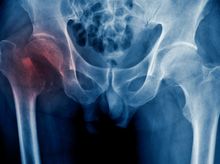Hip Fracture Surgery in Siegburg
Search and Compare the Best Clinics and Doctors at the Lowest Prices for Hip Fracture Surgery in Siegburg













































































































































No Time?
Tell us what you're looking for and we'll reach out to the top clinics all at once
What does a Hip Fracture Surgery Procedure Involve?
The process of the Hip Fracture Surgery encompasses various stages such as preliminary preparations prior to surgery, the actual surgical procedure, and care after the operation. In the initial stage, the medical professional employs tools for diagnosis such as computed tomography scans and radiographic imaging to determine the severity of the bone break and devise the most fitting surgical strategy.
If you undergo internal repair using screws, your surgeon inserts metal screws into the bone to hold it together while the fracture heals. With a total hip replacement, your surgeon replaces the upper femur and the socket in your pelvis with prostheses, while with a partial hip replacement, your surgeon only replaces the head and neck of the femur with a metal prosthesis. All of these types of hip fracture surgery are performed under general or spinal anesthetic.
How Long Should I Stay in Siegburg for a Hip Fracture Surgery Procedure?
Length of residence in Siegburg for a Hip Fracture Surgery can differ due to several elements, encompassing the patient's general wellbeing, the intricacy of the operation, and recovery rate. You may need to stay in the hospital for four to eight days after the surgery. Therefore, you generally should plan to stay in Siegburg for around 10 to 14 days or until your surgeon says it is okay for you to travel home as sitting too long can be uncomfortable for you. Throughout this time, healthcare personnel diligently check the patient's level of discomfort, wound healing progress, and physical recuperation
What's the Recovery Time for Hip Fracture Surgery Procedures in Siegburg?
The recovery period depends on which type of hip fracture surgery you underwent. In general, you may be able to return to some light activities within three to six weeks. You should be able to do most of your regular activities, such as taking long walks and exercising, within ten to twelve weeks. However, the total recovery period may take as long as six to twelve months. With the passage of time, individuals' efforts are centered on enhancing muscle strength and improving equilibrium, all aimed towards achieving self-reliance
What sort of Aftercare is Required for Hip Fracture Surgery Procedures in Siegburg?
Post-treatment care after a Hip Fracture Surgery is a pivotal part of the recovery process. This commonly involves consistent check-ups with your medical specialist, pain control measures, rehabilitative exercises, and occupational therapy. Keeping a direct channel of communication with your healthcare provider during this time is key to monitor progress and swiftly address any possible complications. Equally significant is following changes in lifestyle, such as nutritious eating and regular physical activity, to boost healing and promote overall well-being.
Additionally, modifications in your home environment might be necessary to promise safety and ease of movement throughout your convalescence. This could involve setting up support rails, utilizing an elevated toilet seat, and eliminating possible stumbling blocks. Your surgeon will recommend you to undergo physical therapy after the procedure, which focuses on your range-of-motion and strengthening exercises. You may also need to attend follow-up hospital checkups with your surgeon or your local doctor.
What's the Success Rate of Hip Fracture Surgery Procedures in Siegburg?
The success rate of hip fracture surgery is around 90% to 95% after 10 years. However, it's imperative to understand that the surgical journey doesn't conclude with the operation itself. Success of a surgical procedure is contingent on a meticulously planned and executed post-surgery care regime, incorporating elements like physical therapy, pain control, and alterations to lifestyle such as embracing a nutritious eating routine, consistent exercise, and forgoing detrimental habits like smoking that may impede recovery and overall health.
Bear in mind, everyone's surgical journey is distinctive. Though a high overall success rate may instill confidence, it's vital to confer with your healthcare provider about your individual prognosis and anticipated outcomes to establish practical expectations and create a tailor-made treatment and post-surgery care strategy.
Are there Alternatives to Hip Fracture Surgery Procedures in Siegburg?
There exist several alternative methods to Hip Fracture Surgery, contingent upon the specific nature of the fracture and the patient's comprehensive health condition. Non-invasive treatments could encompass pain management, physiotherapy, employing mobility aids, and taking medications such as bisphosphonates via intravenous (IV) tubing in the hospital. However, this is only recommended for people who are too frail to cope with surgery (those with severe health issues). Occasionally, a less invasive surgical approach may replace traditional hip fracture surgery, contingent largely on the depth and site of the fracture.
This information has been accurately sourced and verified by a medical professional for its accuracy, however, we strongly recommend you to consult with your doctor before pursuing medical procedures overseas.








